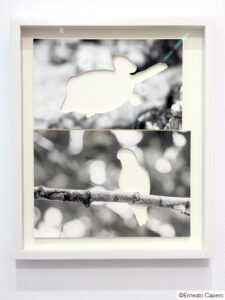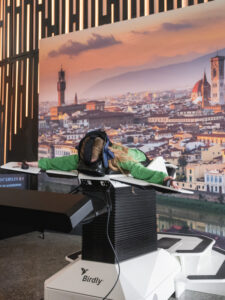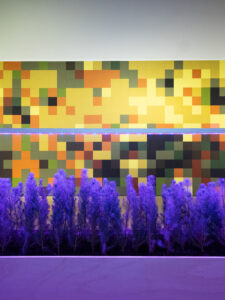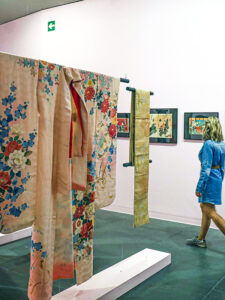UNTIL SUNDAY 2/3
F. BANCAJA. Pl. Tetouan, 23
The Bancaja Foundation takes the final breaths of its tenth anniversary by bringing out all the bait. A new Sorolla exhibition will arrive at the beginning of October and the start of the course in September has been dedicated to Picasso. A totem of international art and its obsession with “the artist and the model”, a theme that runs through all his work, converted into a pictorial genre with its own identity. The Valencian foundation is the private institution with the most graphic works by Picasso in the world (engravings, mostly) and takes advantage of it by revisiting it again and again from a thousand and one perspectives, like a consummate cubist. This time, has been set on the last twenty years of the life of the man from Malaga in which he lived a time of profuse artistic creation far from Paris with his wife at the time, one of many, but his muse par excellence, Jacqueline Roque, of which he made more than 400 portraits before dying. Picasso avoided using models throughout his mature life., He preferred to paint people who affected him in some way. After all, according to the co-curator of the exhibition, Fernando Castro, “what Picasso modulates with his model is, always, your wish". Let's assume that we have to separate the artist from the work (especially, if this one is already dead), that we should not give importance to the 45 years of age difference between the two, nor to the abuse of power he exercised over his partners and children, and that the theme of the artist and the model based on a gifted man who performs the sublimating action of painting in front of a passive woman whose only interest is physical, assuming all this, There is no doubt that Pablo Picasso is one of the great geniuses of universal art.. And this exhibition is a good opportunity to see again some of the two thousand works by the artist that Bancaja owns among linoleums, illustrated books and engravings Suite 347 and the Suite 156. Other gems from institutions such as the Reina Sofía Museum or the ABANCA collection also sneak in at the cardinal points of the first room., the magnificent oil paintings “The Painter and the Model”, and six portraits of Jacqueline from the Picasso Museum in Malaga, provider next to the Picasso Museum in Barcelona. Both, with Bancaja, they form a Picassaian Mediterranean corridor that, it seems, will take shape in the near future.
Picasso was over seventy years old when he met Jacqueline, It's the fifties and the world believes it has betrayed the Avant-garde and is finished.. That's where Jacqueline comes into the picture., a woman very mistreated by historiography, among other things, because it greatly restricted access to Picasso and because he forbade his children and grandchildren from viewing the painter's body.. Family troubles aside, Castro says that Picasso's barbaric production during the last twenty years of his life would not have been possible without Jacqueline by his side.. We can see her with him in the La Californie studios (Cannes) o Our Lady of Life (Mougins) thanks to photographs that show Picasso in his creative and family environment. Sometimes, the pieces that appear in the photo, they hang on site a few meters inside the exhibition. From 1954 He began to paint the face of his last muse using primitivist forms or post-cubist geometry., or recreating scenes from some of the painters who most influenced him, as The women of Algiers by Delacroix, o Lunch on the grass by Edouard Manet, present in this exhibition. Jacqueline is always there. But he also draws musketeers, bullfighters, the world of the circus… the things I saw on TV. In the end, as well as one of the greatest artists of modern art, Picasso was also a grandfather watching TV. S.M.











